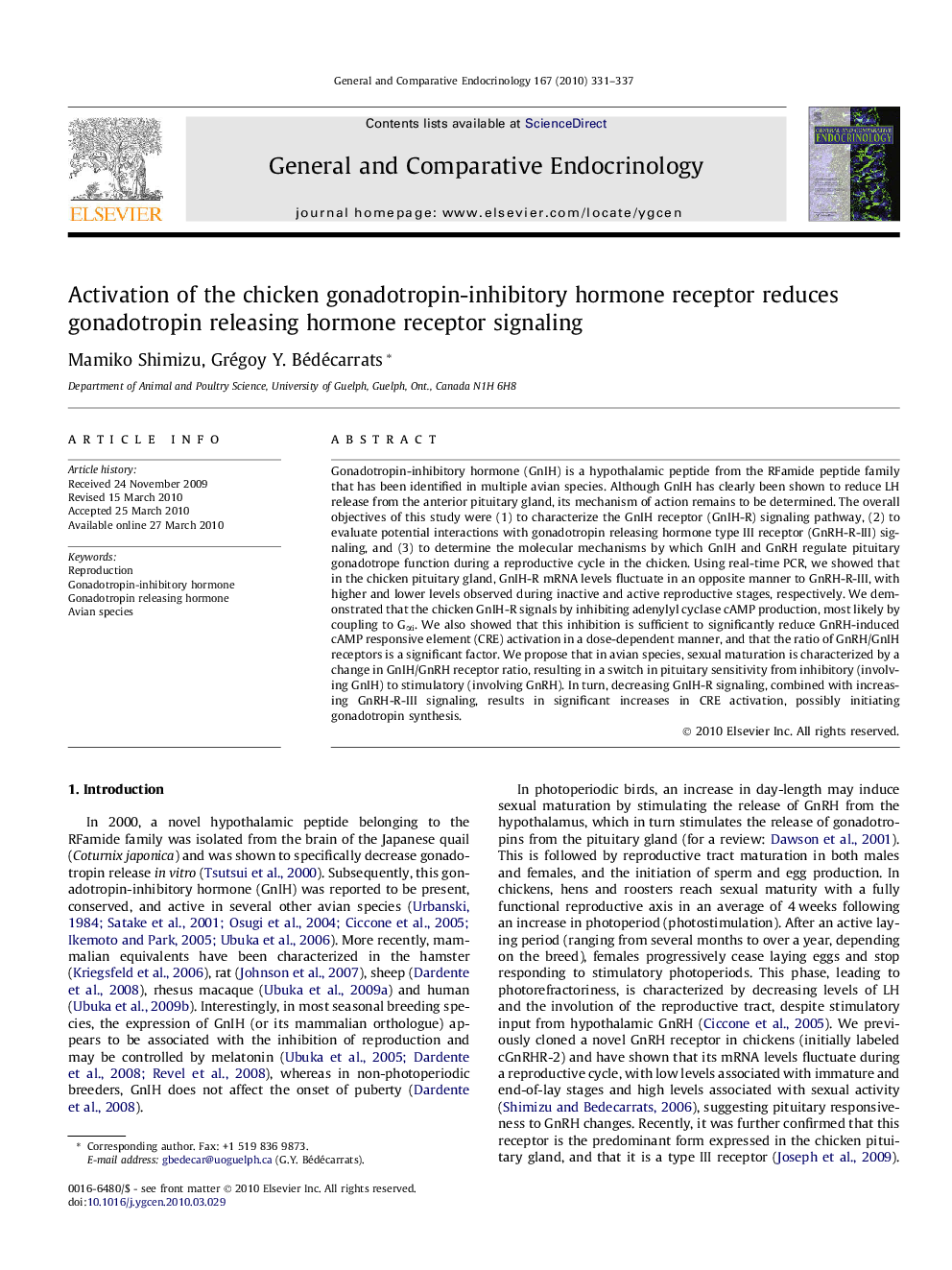| Article ID | Journal | Published Year | Pages | File Type |
|---|---|---|---|---|
| 2801005 | General and Comparative Endocrinology | 2010 | 7 Pages |
Gonadotropin-inhibitory hormone (GnIH) is a hypothalamic peptide from the RFamide peptide family that has been identified in multiple avian species. Although GnIH has clearly been shown to reduce LH release from the anterior pituitary gland, its mechanism of action remains to be determined. The overall objectives of this study were (1) to characterize the GnIH receptor (GnIH-R) signaling pathway, (2) to evaluate potential interactions with gonadotropin releasing hormone type III receptor (GnRH-R-III) signaling, and (3) to determine the molecular mechanisms by which GnIH and GnRH regulate pituitary gonadotrope function during a reproductive cycle in the chicken. Using real-time PCR, we showed that in the chicken pituitary gland, GnIH-R mRNA levels fluctuate in an opposite manner to GnRH-R-III, with higher and lower levels observed during inactive and active reproductive stages, respectively. We demonstrated that the chicken GnIH-R signals by inhibiting adenylyl cyclase cAMP production, most likely by coupling to Gαi. We also showed that this inhibition is sufficient to significantly reduce GnRH-induced cAMP responsive element (CRE) activation in a dose-dependent manner, and that the ratio of GnRH/GnIH receptors is a significant factor. We propose that in avian species, sexual maturation is characterized by a change in GnIH/GnRH receptor ratio, resulting in a switch in pituitary sensitivity from inhibitory (involving GnIH) to stimulatory (involving GnRH). In turn, decreasing GnIH-R signaling, combined with increasing GnRH-R-III signaling, results in significant increases in CRE activation, possibly initiating gonadotropin synthesis.
